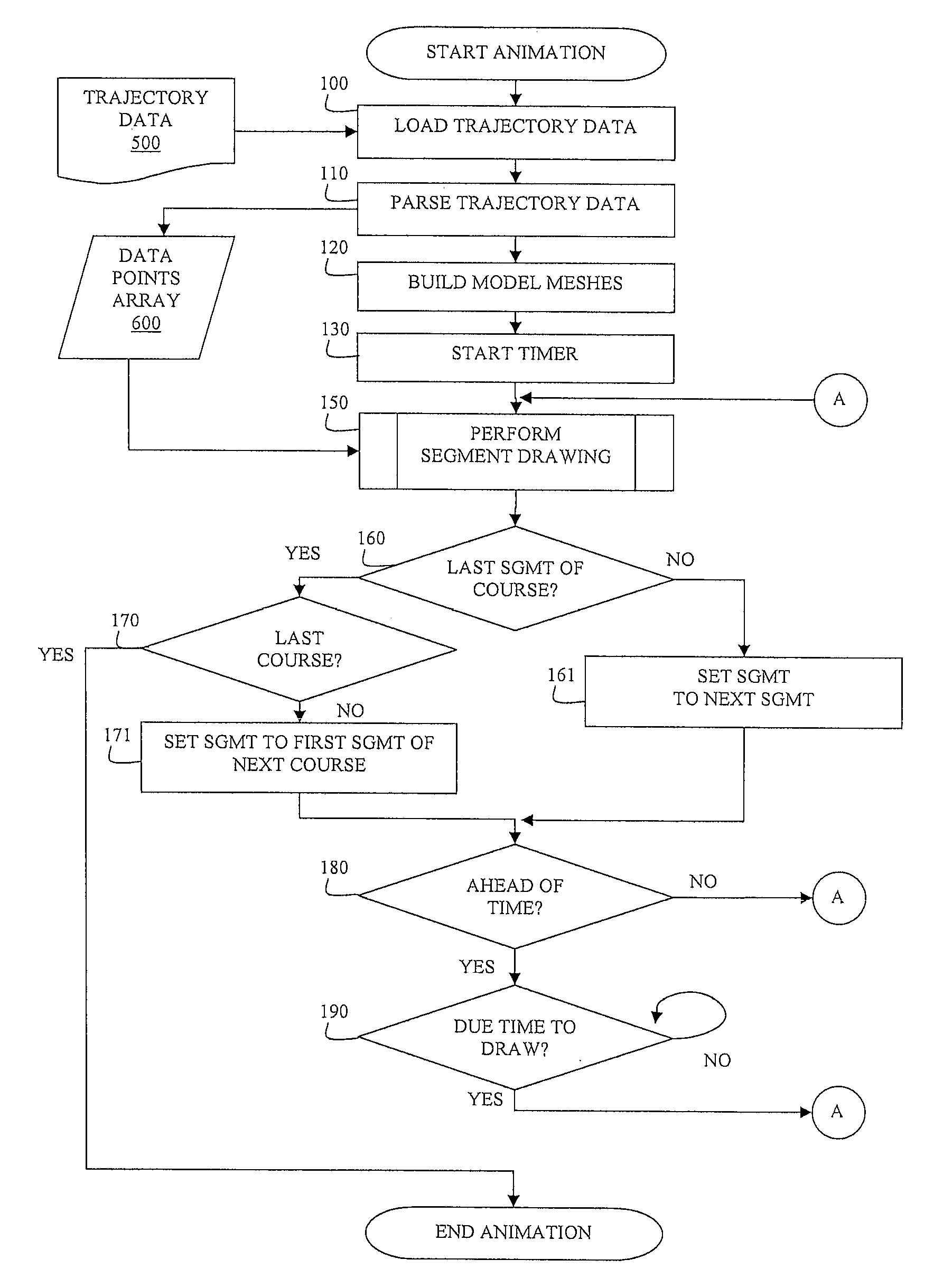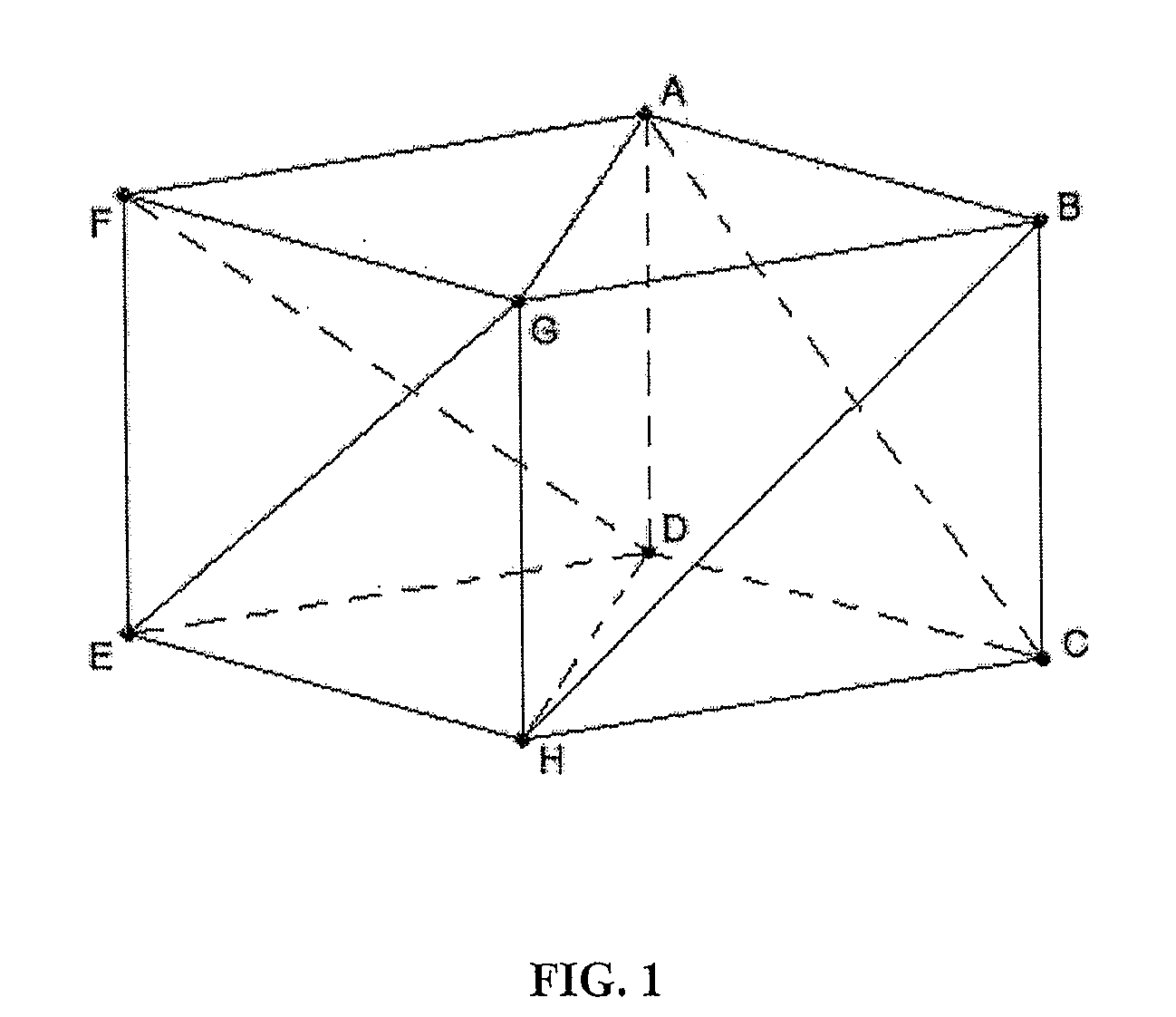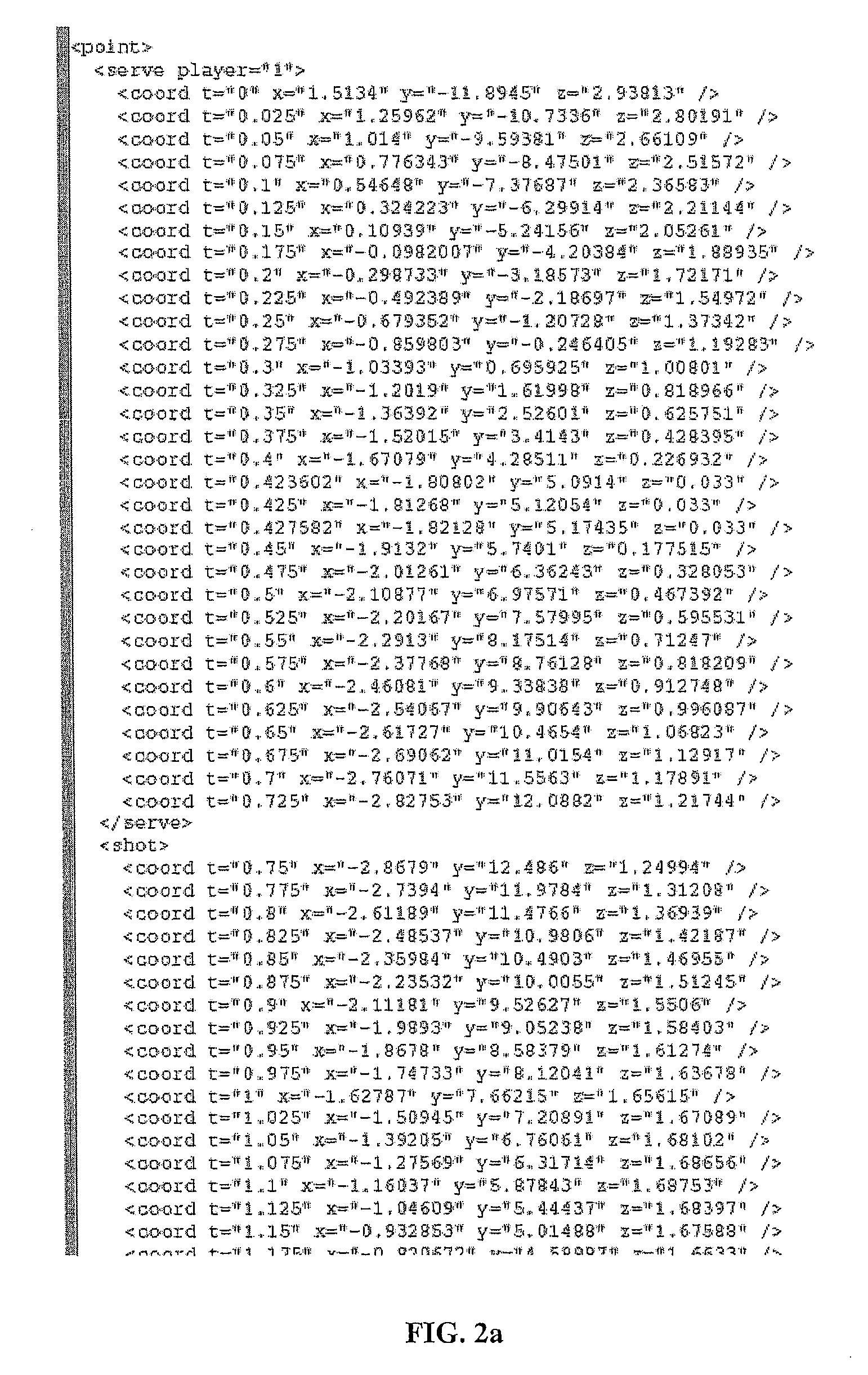Method for modeling and animating object trajectories in three-dimensional space
a three-dimensional space and object technology, applied in the field of three-dimensional space object modeling and animating trajectories, can solve the problem that the conventional methods for modeling and animating object trajectories in three-dimensional (3d) space cannot create an accurate and dynamic object trajectory in real-tim
- Summary
- Abstract
- Description
- Claims
- Application Information
AI Technical Summary
Benefits of technology
Problems solved by technology
Method used
Image
Examples
Embodiment Construction
[0021]The present invention provides methods for modeling and animating object trajectories in three-dimensional (3D) space. The present invention dynamically and accurately create an object trajectory, and represent the movement of a 3D object without any distortion of a 3D object shape even when the object trajectory arcs and / or swerves.
[0022]A position in 3D space is called a 3D point, and an object trajectory is represented by at least two 3D points recorded in time order. The present invention dynamically loads trajectory data comprising at least two 3D points and organizes the loaded trajectory data into individual parts defined as courses. In the present invention, a course means a modeling unit of a trajectory, and each course represents a separate 3D model mesh. A 3D model mesh is a 3D wireframe representing an object trajectory. 3D points created for a 3D model mesh are called vertices, to distinguish a vertex from a 3D position of an object represented by a 3D point. The ...
PUM
 Login to View More
Login to View More Abstract
Description
Claims
Application Information
 Login to View More
Login to View More - R&D
- Intellectual Property
- Life Sciences
- Materials
- Tech Scout
- Unparalleled Data Quality
- Higher Quality Content
- 60% Fewer Hallucinations
Browse by: Latest US Patents, China's latest patents, Technical Efficacy Thesaurus, Application Domain, Technology Topic, Popular Technical Reports.
© 2025 PatSnap. All rights reserved.Legal|Privacy policy|Modern Slavery Act Transparency Statement|Sitemap|About US| Contact US: help@patsnap.com



